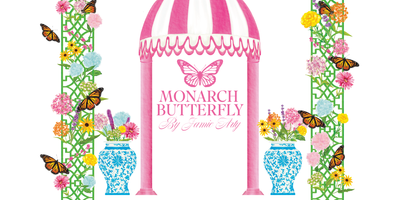Flutter & Buzz Harmony Kit Plant Care Guide and Information

Smooth Aster (Symphyotrichum laeve)
Life Cycle: Perennial
USDA Zones: 2, 3, 4, 5, 6, 7, 8, 9
US Regions: Mountain, Arid/Desert, Plains/Texas, Midwest, Northern, Northeast, Southeast
Stratification: Not Required
Germination Ease: Easy
Sunlight: Full Sun, Part Sun
Height: Up to 40 Inches
Color: Beautiful Blue
Bloom Season: Early Fall, Late Fall
Uses: Attracts Pollinators, Including Honeybees and Butterflies; Suitable for Cut Flowers
Bergamot Seed (Monarda fistulosa)

Species Origin: Native to the United States
Type: Native Wildflowers
Life Cycle: Perennial
USDA Zones: 2, 3, 4, 5, 6, 7, 8, 9
US Regions: Mountain, Arid/Desert, Plains/Texas, Midwest, Northern, Northeast, Southeast
Stratification: Not Required
Germination Ease: Easy
Sunlight: Full Sun, Part Sun
Height: Up to 48 Inches
Color: Shades of Pink and Purple
Bloom Season: Late Summer through Early Fall
Uses: Draws Pollinators, Including Honeybees, Butterflies, and Hummingbirds; Offers a Fragrant Aroma; Suitable for Cut Flower Arrangements; Resistant to Deer
Bergamot (Monarda fistulosa) is a delightful native wildflower originating from the United States. As a perennial plant, it adapts well to various USDA zones and regions across the country. Bergamot seeds don't require stratification, making them easy to grow for all types of gardeners. This plant's lovely pink and purple blooms attract a diverse array of pollinators, including honeybees, butterflies, and even hummingbirds. With its aromatic presence and resistance to deer, Bergamot is a versatile and enchanting addition to any garden.
Fennel Seed Information (Foeniculum vulgare)

Species Origin: Native to the Mediterranean
Type: Open Pollinated, Heirloom, Suitable for Both Cool and Warm Seasons
Life Cycle: Annual, Biennial, or Tender Perennial
USDA Zones: 4, 5, 6, 7, 8, 9, 10, 11, 12
Planting Method: Direct Sow
Sunlight: Full Sun
Height: Up to 48 Inches
Color: Yellow and Green
Bloom Season: Early Summer through Late Summer
Uses: Attracts Butterflies, Releases an Aromatic Fragrance, Resistant to Deer
Fennel seeds, also known as Finocchio, belong to the species Foeniculum vulgare and hail from the Mediterranean region. They are versatile, suitable for planting in both cool and warm seasons, and their life cycle can be annual, biennial, or tender perennial. These seeds thrive in USDA Zones 4 to 12 and are best planted directly in the soil under full sun. Fennel's tall stature of up to 48 inches showcases striking yellow and green foliage, with blooms gracing the garden from early to late summer. Besides being a valuable attractor of butterflies, fennel releases a delightful aromatic scent and is resistant to deer, making it a multifaceted addition to any garden.
Showy Milkweed ( Asclepias Speciosa)

Species Origin: Native Wildflower of the United States
Type: Native Wildflowers
Life Cycle: Perennial
USDA Zones: 3, 4, 5, 6, 7, 8, 9
US Regions: California, Mountain, Arid/Desert, Plains/Texas, Midwest, Northern
Stratification: Cold and Wet for 4 Weeks
Germination Ease: Requires 4 Weeks of Stratification
Sunlight: Full Sun
Height: Up to 40 Inches
Color: Shades of Pink and Purple
Bloom Season: Early Summer to Late Summer
Uses: Attracts a Variety of Pollinators, Including Honeybees, Butterflies, and Hummingbirds; Resistant to Deer
Showy Milkweed, also known as Greek Milkweed or Silkweed, bears the scientific name Asclepias speciosa and is a native wildflower in the United States. As a perennial plant, it persists year after year, flourishing in USDA Zones 3 through 9. Showy Milkweed's habitat spans various US regions, including California, mountainous areas, arid deserts, the plains of Texas, the Midwest, and northern regions. To encourage germination, these seeds benefit from a cold and wet stratification period of four weeks. Once established, this plant, reaching heights of up to 40 inches, graces the garden with its pink and purple blossoms from early to late summer. Its welcoming presence attracts an array of pollinators, such as honeybees, butterflies, and hummingbirds, while also maintaining resistance to deer browsing.






Leave a comment